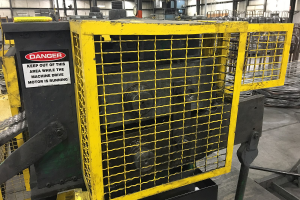The Problem With OSHA Record Keeping

OSHA record keeping was introduced in the 1970’s with the goal of creating safer workplaces. While a good and helpful idea, OSHA recordable and lost work-day case rates may be too much of a focus for many companies, while off the job injuries often go unaddressed.
The cry for leading indicators has been going on for many years but we still benchmark and worry over the OSHA recordable and lost work-day case rates. Managers are driven by their Boards and top management to continuously improve, and the only things that are managed are things that are measured. However, there is a difference in actually measuring performance and simply managing to hit a certain number.
People need to measure all types of safety related aspects to be able to tell when things are working right and when things require correction. If we had a database of near-miss incidents for tasks where hazards could result in serious or fatal injury, we would likely do a better job of addressing those risks proactively. Unfortunately, most organizations do not have such data. The same is true for off-the-job injuries, which ultimately cost employers millions of dollars each year. Since we do not have the data to back these major issues, the issues are not as much of a priority to employers as are OSHA recordable cases.
OSHA record keeping was introduced in the 1970’s and my advice is for companies to view it as a compliance issue – not one of reducing risk. Even safety professionals have fallen into the trap of benchmarking and seeking ever-lower numbers while ignoring the big picture of safety as described by National Safety Council data:
“Off-the-Job Injuries
“Off-the-job” injuries are injuries that involve employed people when they are not working. For example, a restaurant cook cuts his hand on a knife while fixing dinner at home or a truck driver who slides off an icy road while driving his car to work, hits a tree, and suffers a sprained wrist. These injuries occurred off the job. If similar injuries had occurred while in the restaurant or driving a truck, they would have been on-the-job injuries. If the cook and the truck driver had been retired, then the injuries would have been neither on-the-job nor off the job because the people were not employed. They would have been classified and non-work injuries. Off-the-job injuries are of concern to employers because NSC statistics show that for each on-the-job death due to unintentional injuries there are about twelve off-the-job deaths of workers due to unintentional injuries. (Note: bold added for emphasis) And for each on-the-job injury involving lost time there are about three off-the-job injuries. There are about six times as many days lost from work due to off-the-job injuries as for on-the-job. Employers have to deal with the same disruptions to production and work schedules whether the injury occurred at work or away from work…”
Mike Taubitz spent many years in top positions at General Motors, including stints as Global Safety Director and Global Regulatory Liaison. He has a strong interest in lean manufacturing and its relationship to safety and in sustainability, and is recognized internationally for his expertise in machine guarding. He assists clients in creating efficient and effective safety programs, especially in manufacturing environments.
For a FREE consultation, please contact us.





